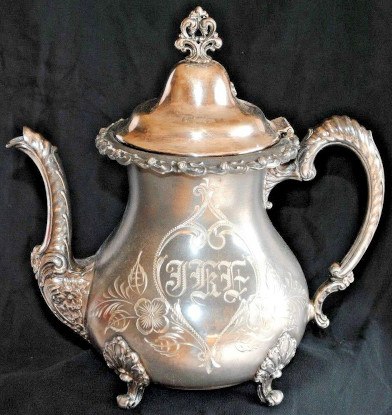Quadruple plate silver refers to items that are coated with a 0.012 inch thick layer of silver. These items are made with a more affordable base layer such as copper or nickel and electroplated with an outer layer of silver.
Typical silver plated items have a .003 inch thick layer of silver. Quadruple plate silver items have four times that amount with a 0.012 inch thick layer. The increased thickness makes the plating more durable and less likely to expose the inner core over time. But although the silver layer is thicker, it's not enough silver to sell for scrap metal. Refiners and scrap yards are not interested in plated silver.
Most silver items are sterling silver and they will have markings that indicate their purity. The markings will appear as "925", "sterling", "ster", or some variation. If any item doesn't have a marking then it's probably silver plated.
If you're wondering whether or not your item is real silver or electroplated silver then check out our article on how to test silver at home.

History
Many holloware and flatware items made in the 19th century are composed of quadruple plate silver. Notable manufacturers were Rogers Brothers, Meriden Brittania Company, and Reed & Barton.
Some of these early electroplated items have elaborate patterns. They contain Victorian details which make them collectible. Before the Victorian period most holloware and flatware items were made of pewter. Antique pewter items have a plain design which makes them not as desirable to some collectors.
The 19th century electroplated antique items were made with high quality craftsmanship. Some people believe that electroplated silver items are of inferior quality. This is not true for antique items.
Value
Quadruple plate silver in the form of holloware or silverware can be valuable depending on the item. But unlike sterling silver items, quadruple plate silver items can't be melted down for their scrap silver value. Therefore the value of one of these items is determined by its pattern and collectibility. Some patterns and brands are more valuable than others and older items can sell for the most money. In particular, antique items from the 19th century can sell for hundreds of dollars.
An item's pattern can be important for some buyers. If a buyer has holloware or flatware with a particular pattern then they may look to buy other items with the same pattern.
If your item is an antique then you have a few options for where to sell it. For a quick sale you could try to sell it locally at an antique shop. Otherwise, you could try to list your item on eBay which has an active market for antique flatware and holloware.
